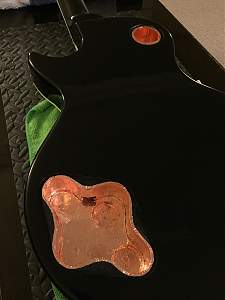MARCH 2018
At this point it seemed like the end was in sight. Now it was time to shield the pickup and control cavities, and the inside of the cavity covers with copper shielding tape. I thought this would be a quick job, but I was able to watch almost all of Godfather Part II in the time it took me to finish... and that's a looong movie







 Reply With Quote
Reply With Quote


